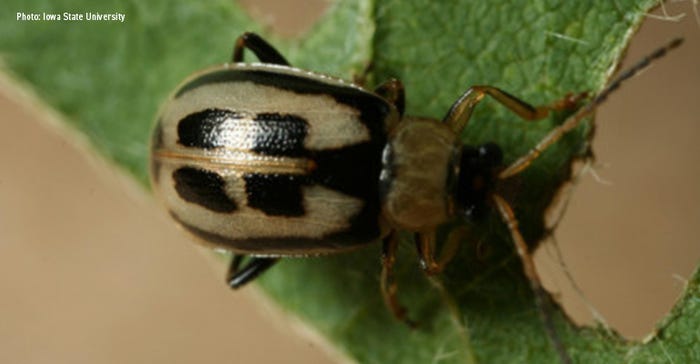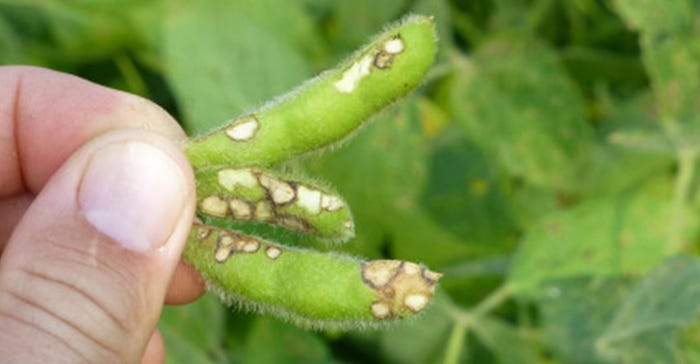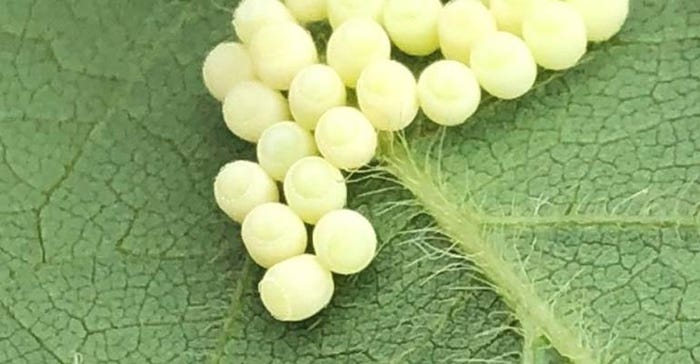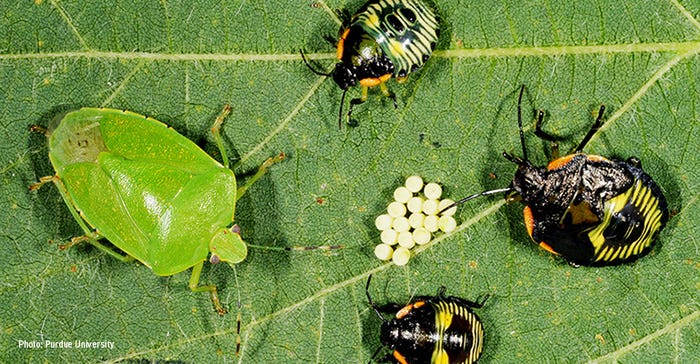August 1, 2022

Sponsored Content
Beck’s Practical Farm Research (PFR)® studies have consistently proven the value of making foliar fungicide applications to soybeans at the R3 growth stage. I am often asked if there is value in adding an insecticide to this treatment. Many of the late-season soybean pests we deal with are very good at hiding in the dense canopies of soybean fields, which makes it difficult for us to be aware of their presence until after they have caused yield loss. To answer the question about an insecticide to the fungicide pass, I typically answer ‘yes’ due to the number of impactful, late-season pests we deal with in soybeans.
However, there are times when we may not need to make an insecticide application, but we need to make sure that we are spending time scouting for damaging pests to ensure we are making the most profitable decisions on a field-by-field basis. One of the key things that we need to keep in mind when making the decision to treat a field with an insecticide is what type of damage the pest is causing. Some pests are primarily foliage feeders, while others can cause significant damage to pods. With foliage feeding, a good rule thumb for a treatment threshold is to treat when we have approximately 20% defoliation of the leaves during the R-stages of development. Pod-feeders are much more damaging due to the direct losses they cause. Because of that, the treatment threshold for them is much more aggressive. This article focuses on some of the more common, damaging pests that we deal with in the mid to later portions of the reproductive growth stages of soybeans.
Japanese Beetles: This pest is a member of the scarab beetle family and is related to the many “June beetle” species. After spending time underground as a grub, the beetles emerge from the soil during the early summer. Japanese Beetles feed on many ornamental plants and can cause significant damage. They also feed on crop plants and can cause damage to soybeans by feeding on their leaves. However, their damage rarely reaches treatment thresholds.

Bean Leaf Beetle (BLB): This insect is a common trouble-maker in soybean fields. They can cause damage during all growth stages of soybean development. During reproductive growth, BLB causes damage to soybean plants by feeding on leaves and pods. When evaluating fields for damage from BLB, I typically add their leaf feeding to the sum of all the other leaf-feeding insects until I see somewhere near 20% defoliation, which rarely occurs most years. There are many defoliation charts available if you want a more thorough guide for BLB damage. Pod feeding from this pest is much more problematic. This feeding typically causes loss of the bean within the pod. The typical threshold for pod feeding occurs when 5 to 10% of the pods show feeding injury.


Soybean Podworm (SPW): This pest is the same pest as corn earworm. SPW can be difficult to find before it has caused significant damage to soybean crops by feeding on pods, so careful scouting during pod development is necessary. The treatment threshold for SPW is met when two worms are found per foot of row.

Stinkbug: There are several species of stinkbug that cause significant damage to soybean crops. The most problematic damage occurs when they pierce the soybean pod with their syringe-like mouth. This feeding results in the death of the pods/beans, which causes direct yield loss. One common threshold utilized for stinkbug during pod-fill is one stinkbug per foot of row.


For more information on scouting and controlling any of these pests, ask your local Beck’s dealer or your local Beck’s Field Sales Agronomist!
Beck's - Farmers At Heart® - revolutionized the customer seed buying experience by remaining true to a foundation built on faith, family, and farming. Founded in 1937, Beck's appreciates the farmers who have helped them become the largest family-owned retail seed company and the third largest seed brand in the United States. The Beck family is now in its fifth generation of family members who work in the business to honor God and help farmers succeed. The Beck family and team of employees help farmers achieve success from generation to generation through authentic customer experiences, product diversity, seed quality, and performance. With a home office located in Atlanta, Ind., Beck's serves farmers throughout the Midwest and Mid-South. For more information about Beck's Superior Hybrids, Inc., visit www.beckshybrids.com.
About the Author(s)
You May Also Like




